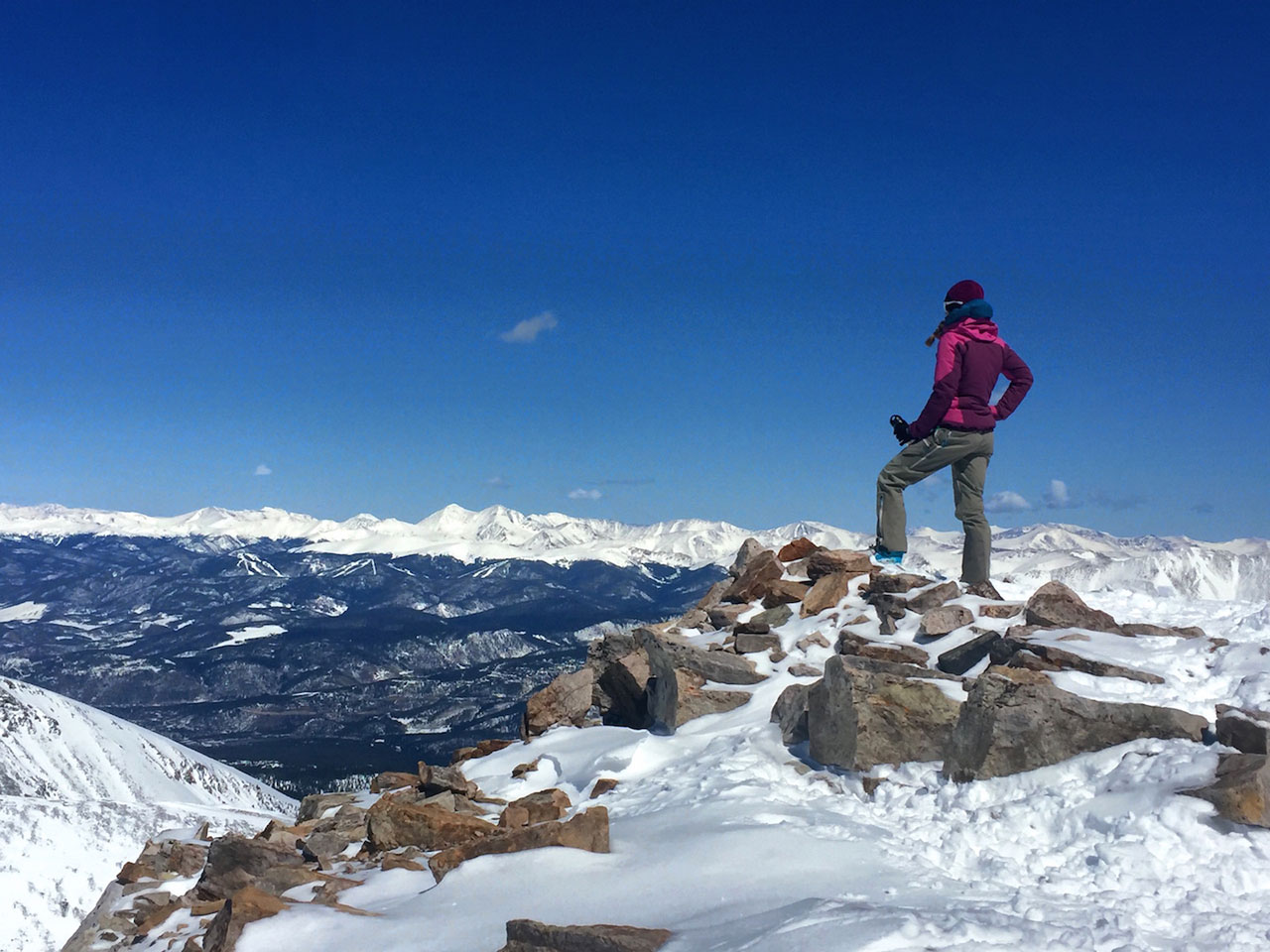The Local newsletter is your free, daily guide to life in Colorado. For locals, by locals.
Live in the Front Range long enough and “climb a fourteener” will most likely find its way onto your must-do list. Colorado boasts 53 of the 96 mountain peaks in the U.S. that scrape the sky at 14,000 feet or higher. Standing on one of those summits is a rite of passage. In the summer, the fourteeners closest to Denver, like Grays and Torreys, are so popular that hiking them starts to feel like fighting your way through the 16th Street Mall on a Saturday.
For those seeking solitude, the best time to climb a fourteener, according to my friend Jack Coming, a lifelong Colorado resident, is in the winter. And by winter, he means spring—March and April—when there is still plenty of snow, but the temperatures are milder, the days are longer, and the snowpack is more solid.

At first, I thought he was crazy. Then I did a couple of overcrowded fourteeners in the summer and early fall, and found myself craving more of a true mountaineering experience, with see-forever views that don’t include hordes of other humans. Over time, as my backcountry skiing skills improved, I caught myself looking up at the tallest snow-capped peaks and wondering what if.
In January, I serendipitously met Jay Irwin, the CEO of Colorado Bike and Ski Tour (CBST) Adventures, in line at a juice shop in Breckenridge. I made a quip about being sick of lines, mainly lift lines. Jay told me that his company did guided backcountry skiing on Quandary Peak, a 14,265-foot mountain just outside of Breck in the Tenmile Range. “There’s no lines there in the winter,” he said.
“But isn’t it avalanche terrain?” I asked.
Jay explained that of all the fourteeners, he chose Quandary because its east-facing slope is mostly low angle, about 22 degrees, which is avalanche-speak for “not steep enough to slide.” In skiing terms, its akin to an easy-to-intermediate run, like a long, evenly-graded blue.
But even then, Jay doesn’t take any chances. He said he sends each person up with avalanche safety gear, including a shovel, beacon, and probe, and more importantly, a guide. “There are some pitches that are 28–30 degrees, and could theoretically slide, so we don’t go in high avalanche danger conditions,” he said. “Our guides make that call.” The guide also helps keep the group on track, skiing the safest lines far from the areas that could slide.
I went home and did some research. It confirmed everything Jay said. Suddenly, skiing a fourteener seemed within the realm of possibility. I emailed him the next day: “I’m in.”
We waited for optimal weather conditions, and went for it on April 2, accompanied by Abraham Pacharz, our guide. Abe said that the conditions were the best he’d ever seen on Quandary: very low avalanche risk, warm, sunny, not a hint of wind or a cloud in the sky. I took that as a good omen.
Still, it took us 1.5 hours to ascend the first mile, about the same amount of time most Boulderites run a half-marathon. I noted our glacial pace, and the fact that we had 2.3 more miles to go to reach the summit. “At 10,000 feet, the oxygen starts reducing exponentially,” Abe said. I translated that as: “Don’t worry, it’s not you, it’s the thin air.”
The last eighth of a mile was the hardest. We were already above 13,000 feet, and the angle was steep enough that it was hard to skin up without sliding back. It was also impossible for me to keep going without having to pause and catch my breath. I started counting my steps, struggling to accomplish even 50 before I needed to stop and take 10 deep breaths. When we topped out, my oxygen-starved brain felt like it was pulsing with the beat of my heart. At the same time, I was elated to have Quandary’s summit all to ourselves. Looking out over the 360-degree views, I noted that the vantage could have held its own with the best of the Himalaya.
Thanks to the mild weather, we spent a good 45 minutes up there, basking on rocks in the sun, eating lunch, playing “name those mountains” (the day was so clear we could see all the way to Aspen’s Maroon Bells), and taking photos. And the best was yet to come—3,000 vertical feet of pristine, untacked powder just waiting to be skied.
Try It: $350; includes lunch and avalanche equipment. Bring backcountry skis, either AT (alpine touring) or telemark, and skins. Rentals available at Mountain Outfitters in Breckenridge. Availability is dependent on conditions. Call CBST Adventures for more info: 970-668-8900








